Contents
What is a Bat?
Bats are amazing animals, and an important part of our natural environment.
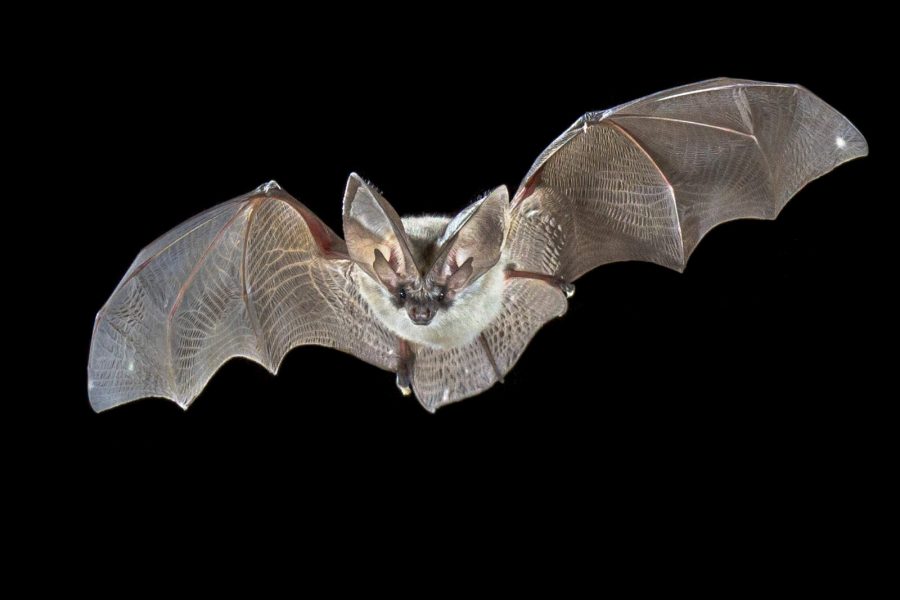
Bats are Mammals
A long time ago, people used to think bats were birds without feathers. But now we know that there is no such thing as a featherless bird. We know that bats are MAMMALS, just like people.
Some of the things that tell us bats are mammals:
- bats are warm blooded
- Bats give birth to live young
- bats nurse their babies with milk
- bats have fur
But bats are very special mammals.
They are the only mammals that can fly (without an airplane!) Flying squirrels are mammals too, but they don’t really fly. They jump from high in a tree glide through the air like a kite. Bats flap their wings and fly like a bird.
How long have bats been around for.
Ancient Ancestors
Scientists have found evidence that bats have existed for 50 million years. Some scientists believe it may have been even longer.
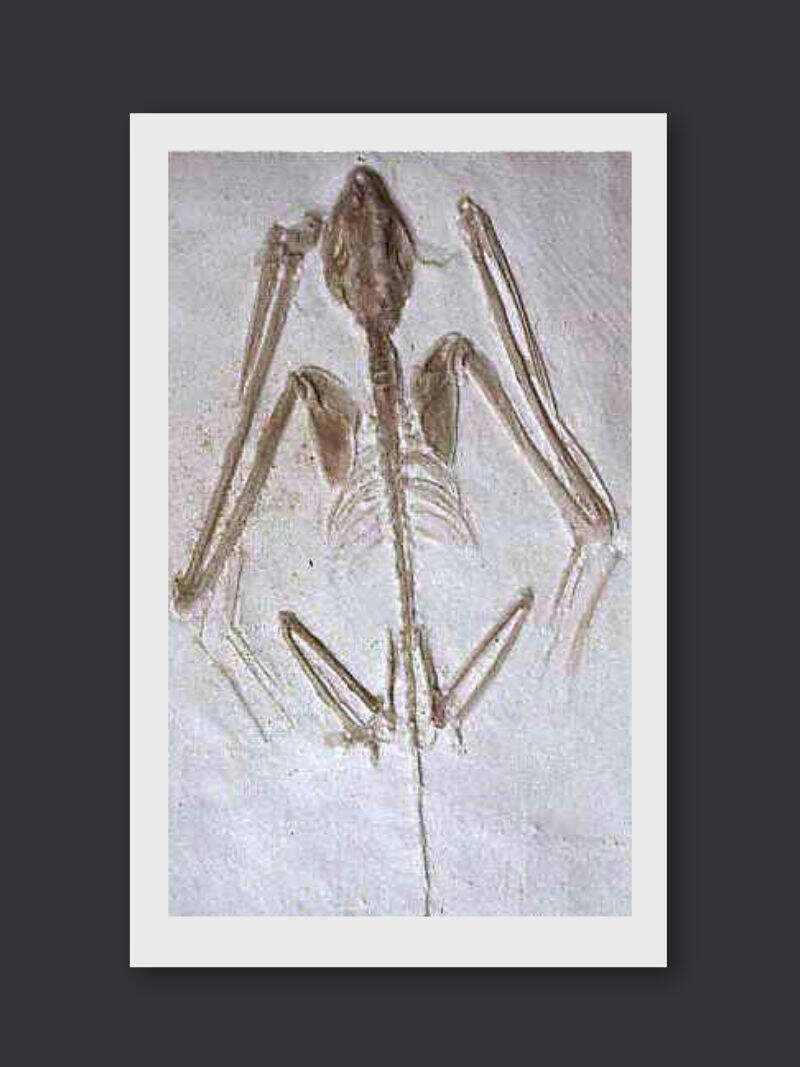
When trying to understand how bats have lived, scientists study living animals. But no one was around 50 million years ago to study the beginnings of bat life. Scientists use “fossils” (old bones) to try to learn about how bats evolved.
The earliest fossils of bats that we’ve found look very much like the skeletons of bats today. This tells us that bats haven’t changed much over the years.
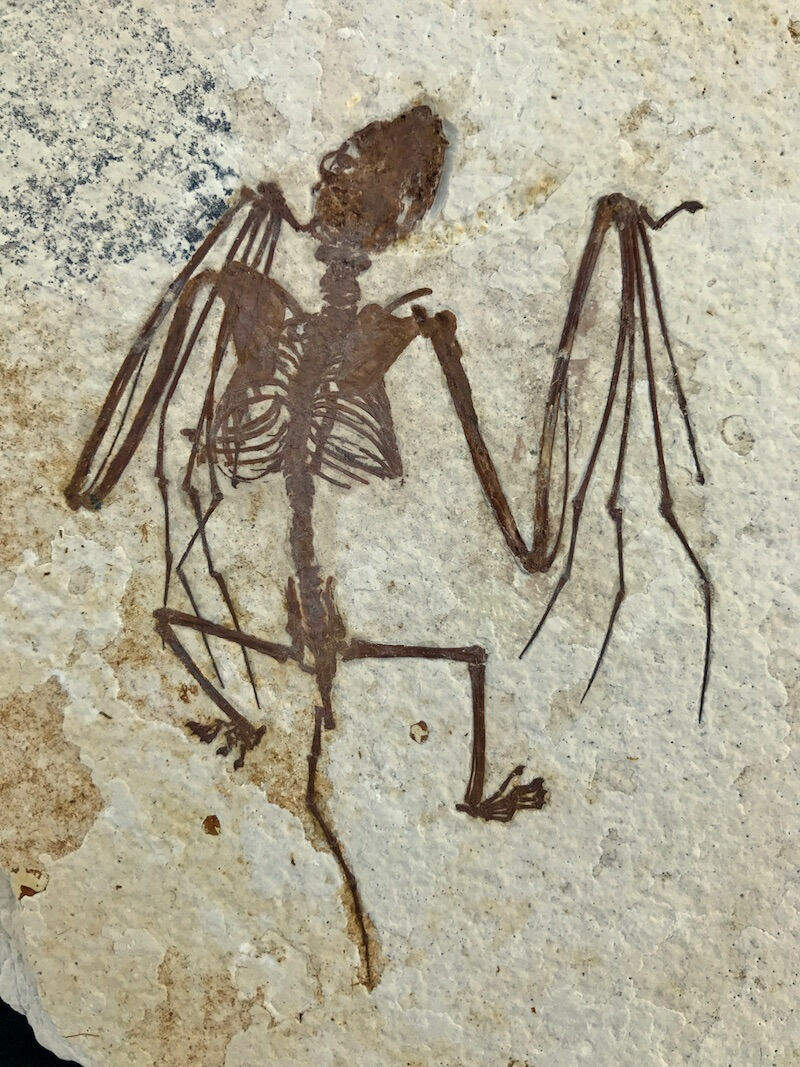
What kind of body does a bat have?
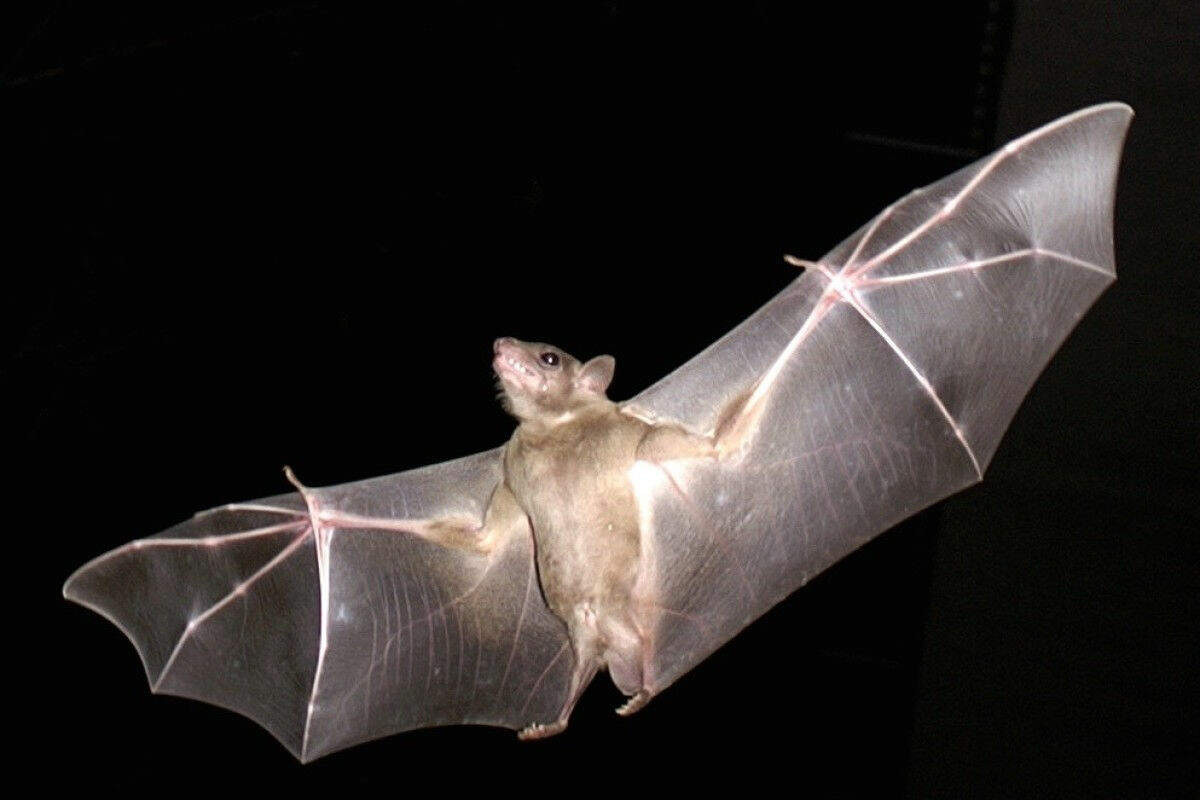
- Bat wings are made of two thin layers of skin stretched over the bat's arm and fingers.
- Bats have a thumb and four fingers, just like people
- The bat's fingers are very long compared to its body.
- If we had fingers like a bat, they would be longer than our legs!
- Bat wings go all the way down the side of the bat's body and partway down its legs.
- When bats fly, they don't just flap up and down. If you watch them closely, it almost looks like they're pulling themselves through the air -- the movement is similar to the butterfly stroke in swimming.
- Bats use their wings for more than just flying. They can wrap their wings around insects or fruit to hold it while eating.
Where do bats sleep?
The bat cave!
The place where a bat sleeps is called its “roost”. Bats have a summer roost and a winter roost.
Bats hang UPSIDE DOWN from their roosts when they sleep.
What do you call a bat baby?
A baby bat is called a "pup"
Bat pups are tiny when born, but grow up fast. Some species are flying and hunting on their own within a month of birth.
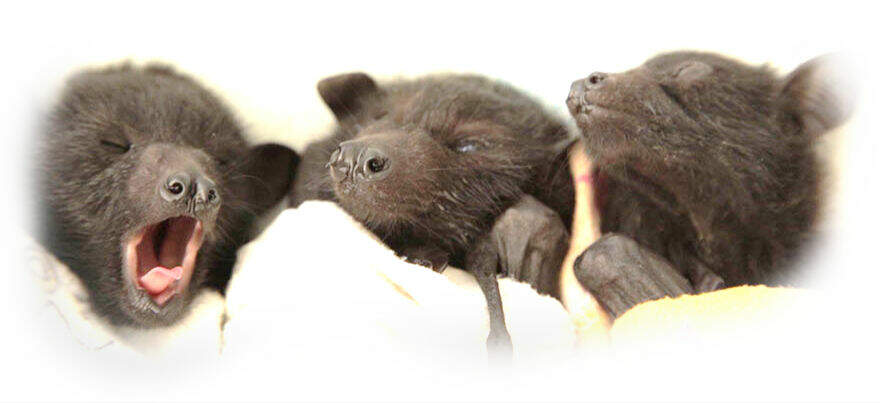
Bats, like people, usually only have one baby at a time although on occasion they’ll have twins.
Pups are born without hair — they look tiny, scrawny and pink. They drink milk from their mothers like all mammals do. They are born with strong legs and claws because they have to hang on to mom when she’s roosting and to the cave when she’s not there. If the baby looses its grip and falls, it will die.
What's special about bat senses?
Bat senses
Bats smell, hear, taste, feel and see just like people do. The term “blind as a bat” isn’t really accurate. Bats have perfectly good eyes for seeing in the daylight. The problem is, they do most of their hunting at night!
Instead of relying on their sense of sight for night-time vision, bats make rapid high-pitched squeaks called “ultrasounds”. These sounds are too high for most people to hear. If these sounds hit something, they bounce back — sort of like when you hear your echo in a mountain or a bathroom when you shout. The bat hears the echo and can tell where the object is. This is called “echolocation”.
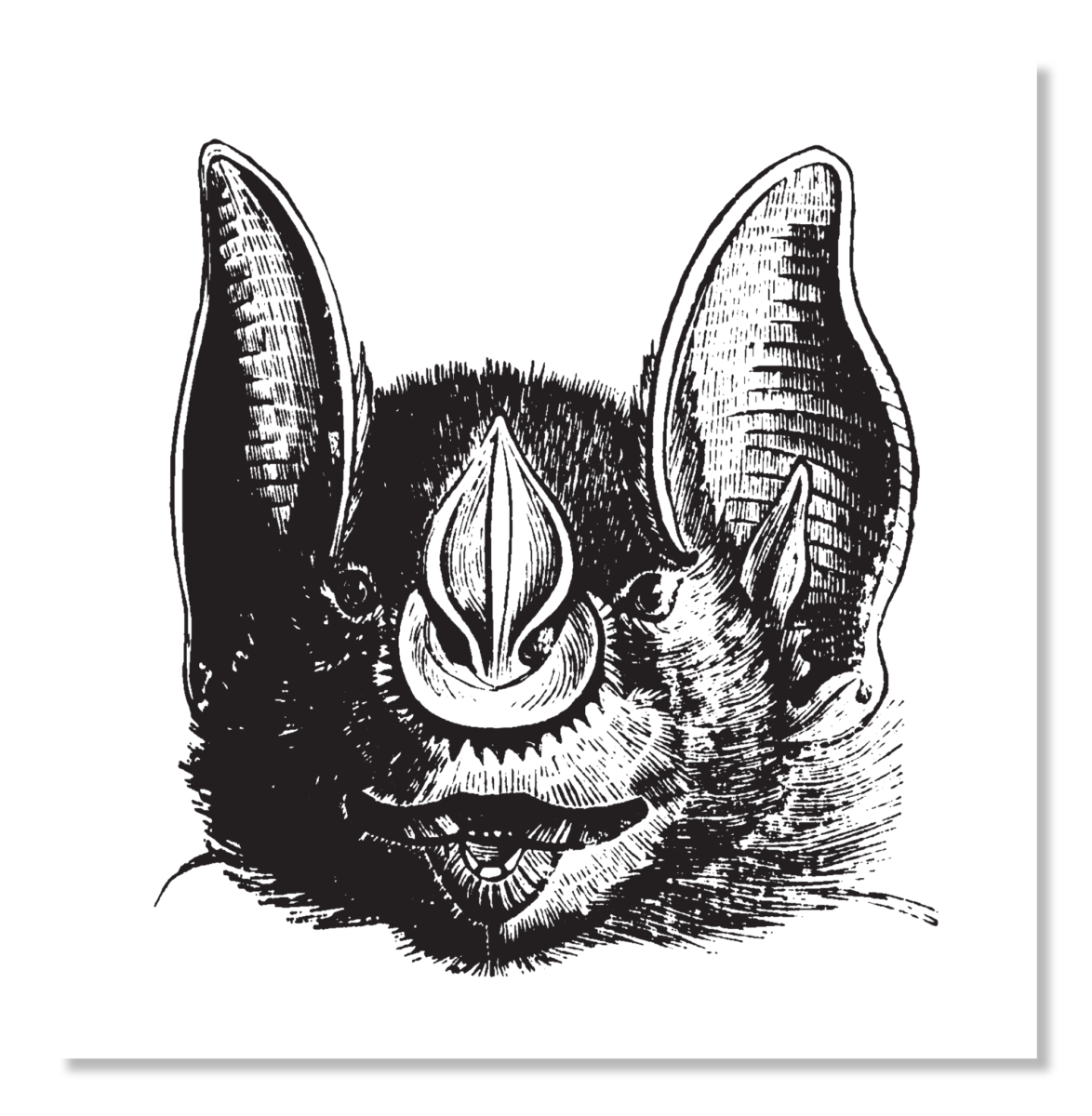
We all know that we shouldn’t talk with our mouths full — and this causes a certain amount of difficulty for some bats who eat while flying (they swoop and catch insects — eating them while they’re still in the air). Although some bats make the squeaks needed for echolocation with their mouths, many send out sounds through their noses. Bats that echolocate with their nose often have special flaps and folds of skin on their faces called “nose leaves”. Scientists think that the nose leaves help the bats send the sounds in different directions. The nose leaves give the bats a rather odd appearance!
Bats have the best hearing of all land mammals. They often have huge ears compared to the rest of the body.

Below: Sparano pipistrelle
Below: Common pipistrelle
Below: Noctule
Dinner time...
What do bats eat?
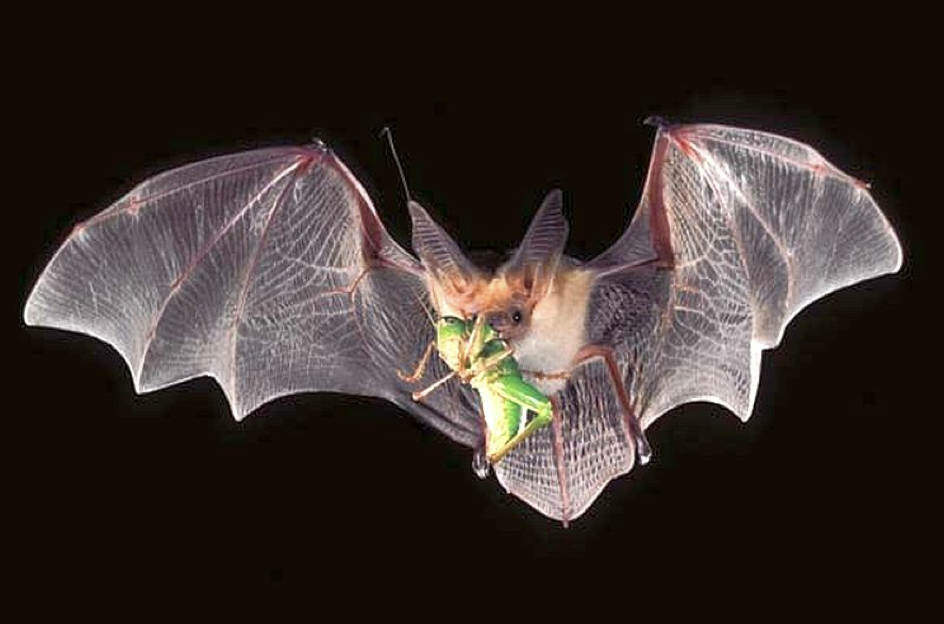
All UK bats eat insects. Each species has its favourite types and hunts them in its own special way. Most insects are caught and eaten in mid-air, though bats sometimes find it easier to hang up to eat larger prey. All bats have very big appetites, because flying uses up lots of energy. A common pipistrelle can eat over 3,000 tiny insects in a single night!
How do bats fly?
They all fly in a different way.
Use the info sheet below to learn more.
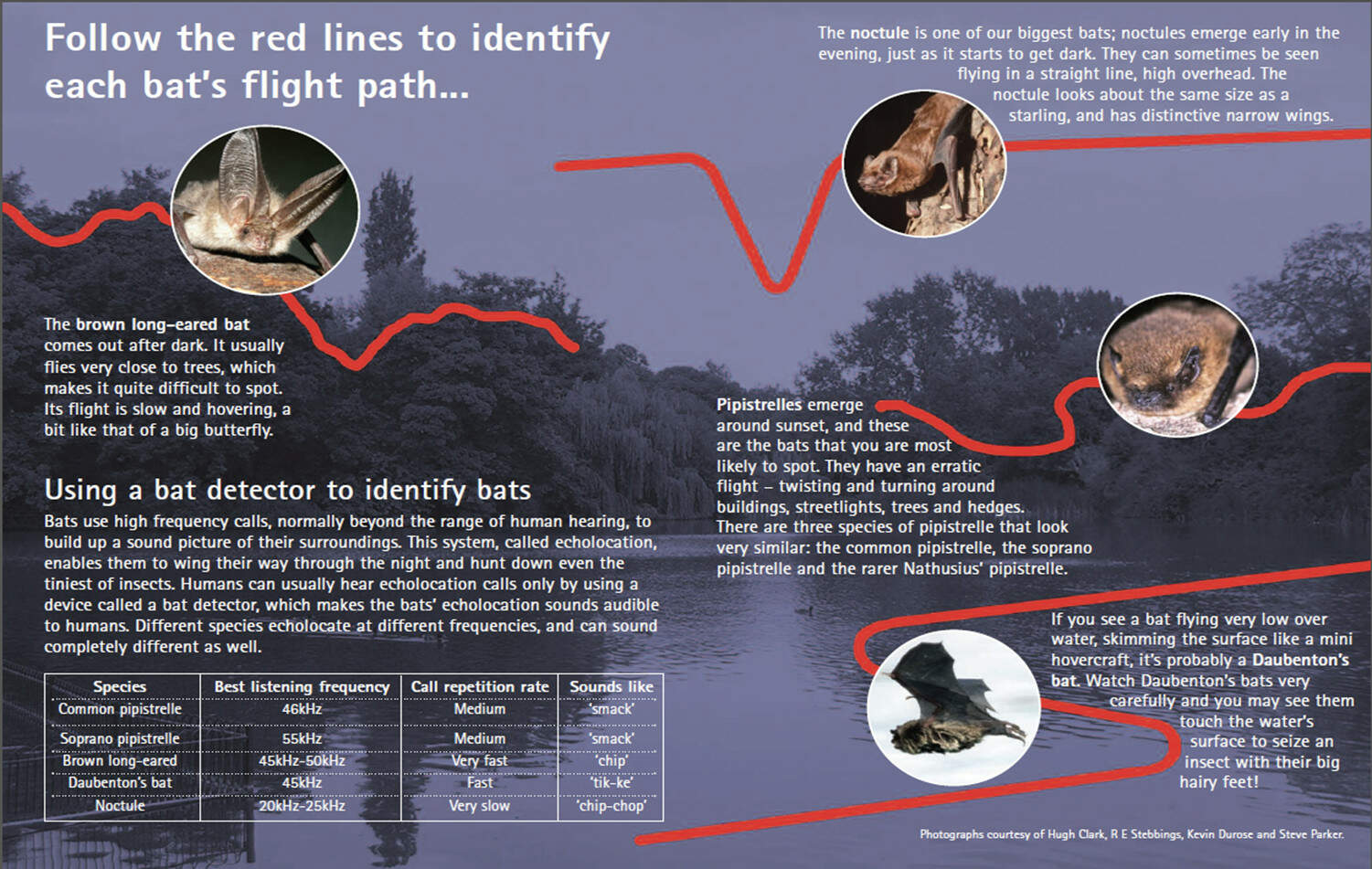
Types of bats
There are more than 1,400 bat species in the world
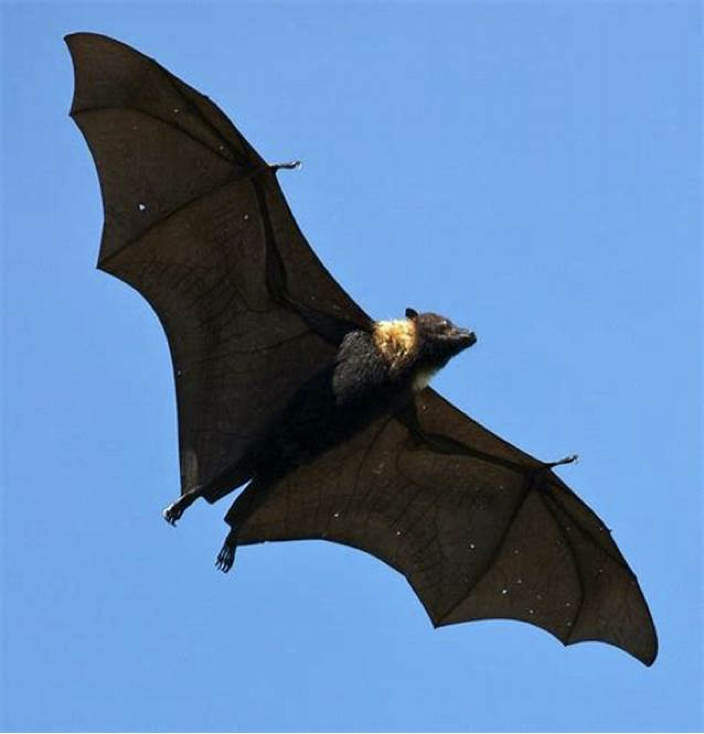
Bats can be as large as a small dog or as small as a bee. The largest bats are the flying foxes with wingspans of up to 2 metres and a body weights of up to 1.5 kilograms. At the other end of the scale is the bumblebee bat, weighing only 2 grams – the world’s smallest mammal! Did you know that bats are more closely related to humans than they are to mice?
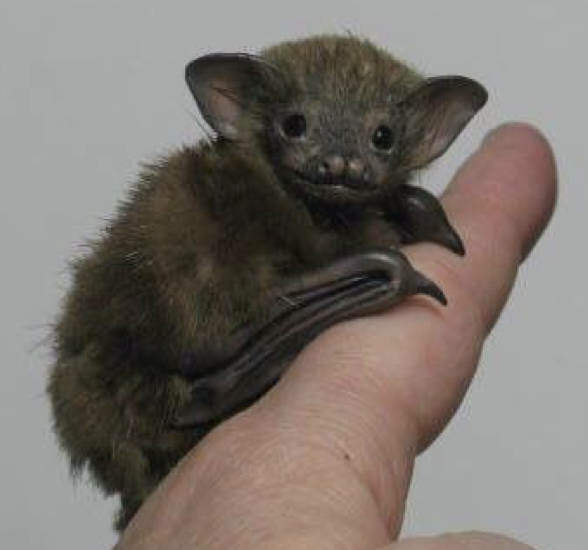
Why do bats sleep upside down?
Ideal Position for Take-Off
Both bats and bird fly, yet they do it in slightly different manners. Unlike birds, bats find it much easier to simply let go of the branch they are clutching and fall into flight almost instantly. Bats let go, fall a meter or so, and then gain enough momentum to glide away. Birds are more of the “jump and flap” type flyers.
Getting relaxed
Unlike many other creatures, it is found that for bats, being upside down is actually easier and more comfortable than other positions. Bat femurs weren’t very good at dealing with compressive stress, hanging upside down is easier then standing or sitting around.
The bat’s tendons are also perfectly designed for hanging upside down. Their tendons relax when they hang upside down, without straining or using up too much energy. This is so effective that even a dead bat will remain hanging upside down.
Safety from predators
Hanging upside down is a great way to hide from predators, such as birds and other dangerous predators, particularly during the daytime. When they sense any danger, they just let go of the branch and are gone in a blink! They’re able to hide themselves by tucking away in places where most creatures are unable to look.
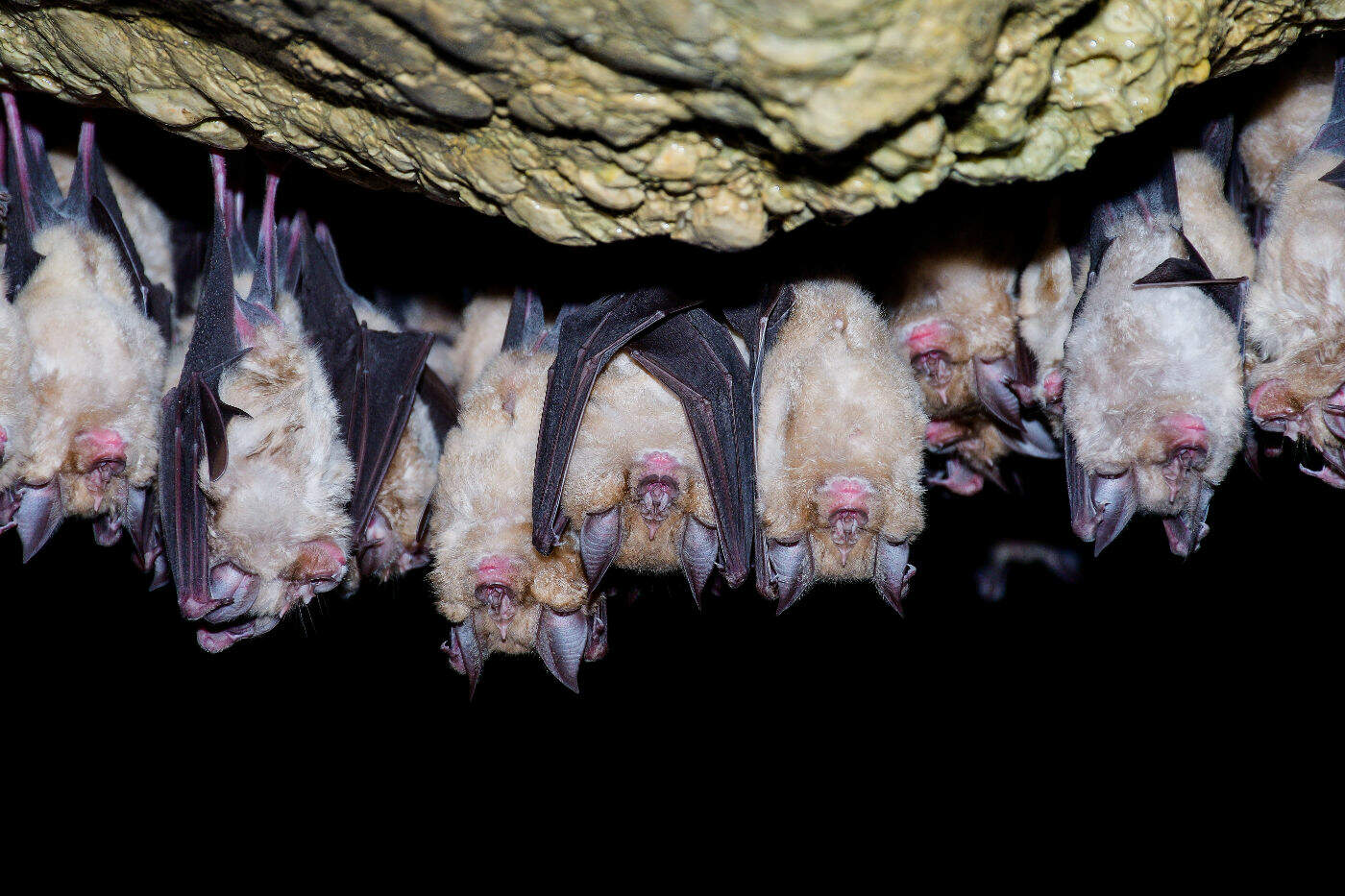
Bats relaxing together, ready to take off and safe from predators
Hibernation
All British bats hibernate.
All British bats hibernate. In winter, bats go into hibernation. Hibernation is an extended period of deep sleep (or torpor) that allows animals to survive cold winters with harsh weather. A bat’s body temperature lowers and their metabolic rate slows, meaning they use less energy and can survive on the fat they have stored up instead of trying to forage for food. All their body systems slow down in order to save energy and their heart rate drops to around 20 beats per minute when hibernating – compared with 1,000 beats per minute in flight. During hibernation, bats need roosts that are cool and remain at a constant temperature. They often move into underground sites, such as caves.
Where do they go?
Pipistrelles are our most common bats, but we don’t know where they all go in winter! We have not found enough hibernation roosts to account for the numbers we see in the summer months.
When do they mate?
Bats mate during the autumn and sometimes into the winter when they hibernate. The females then store the sperm and do not become pregnant until the spring.
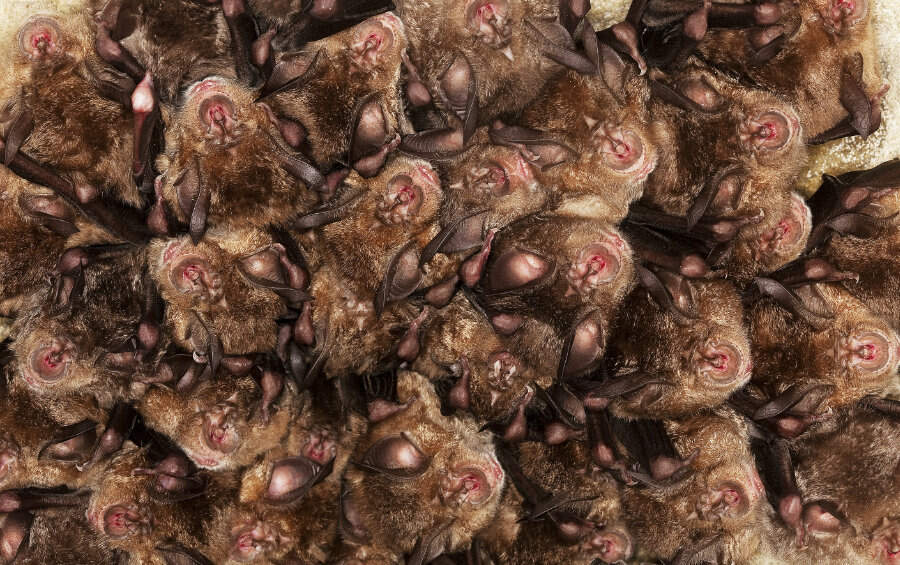
Having their babies
Maternity roosts
Pregnancy
A bat’s pregnancy lasts between six and nine weeks. The length of the pregnancy depends on the species and can be influenced by weather, climate and availability of food. Bats usually give birth to a single baby (called a pup) each year. They keep their babies close and nurture them carefully. The young bats are suckled by their mothers for four to five weeks until they are old enough to fly. They then begin to venture out from the roost to forage for food.
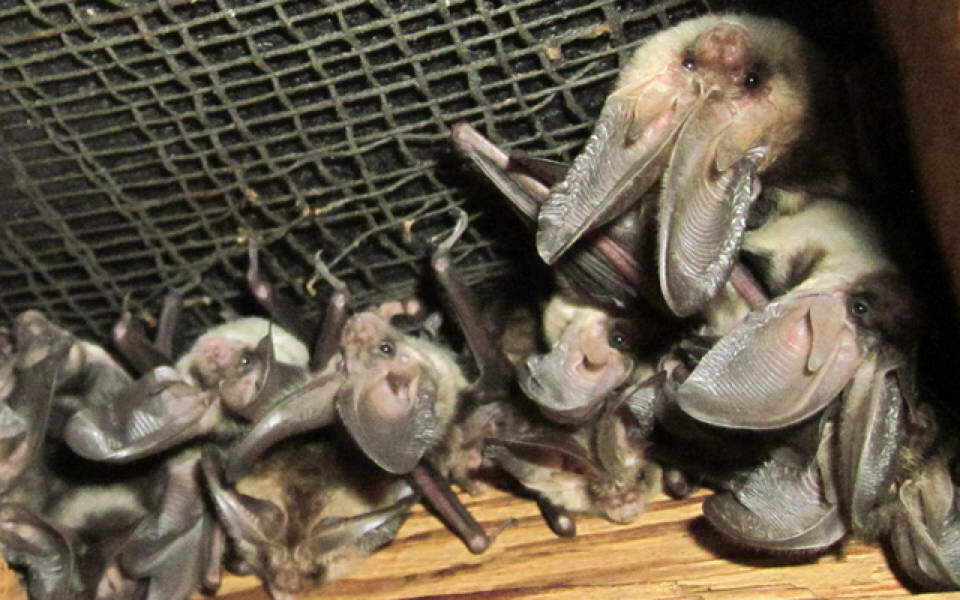
How are bats protected?
Bats and the law
This means you may be committing a criminal offence if you:
Deliberately take , injure or kill a wild bat
Intentionally or recklessly disturb a bat in its roost or deliberately disturb a group of bats.
Damage or destroy a place used by bats for breeding or resting (roosts) (even if bats are not occupying the roost at the time)
Possess or advertise/sell/exchange a bat of a species found in the wild in the EU (dead or alive) or any part of a bat.
Intentionally or recklessly obstruct access to a bat roost.
Please refer to the legislation for the precise wording – the above is a brief summary only
Wildlife and Countryside Act (1981) (as amended)
Conservation of Habitats and Species Regulations (2017) (as amended).



